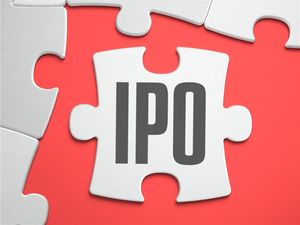
Eyecare company Bausch + Lomb (NYSE: BLCO) missed Wall Street’s revenue expectations in Q1 CY2025 as sales rose 3.5% year on year to $1.14 billion. On the other hand, the company’s full-year revenue guidance of $5.05 billion at the midpoint came in 1.1% above analysts’ estimates. Its non-GAAP loss of $0.15 per share was significantly below analysts’ consensus estimates.
Is now the time to buy Bausch + Lomb? Find out by accessing our full research report, it’s free.
Bausch + Lomb (BLCO) Q1 CY2025 Highlights:
- Revenue: $1.14 billion vs analyst estimates of $1.15 billion (3.5% year-on-year growth, 0.7% miss)
- Adjusted EPS: -$0.15 vs analyst estimates of $0.02 (significant miss)
- Adjusted EBITDA: $126 million vs analyst estimates of $163.4 million (11.1% margin, 22.9% miss)
- The company lifted its revenue guidance for the full year to $5.05 billion at the midpoint from $4.98 billion, a 1.5% increase
- EBITDA guidance for the full year is $875 million at the midpoint, below analyst estimates of $922.4 million
- Operating Margin: -7.3%, down from 0.5% in the same quarter last year
- Constant Currency Revenue rose 5% year on year (20.2% in the same quarter last year)
- Market Capitalization: $4.85 billion
“Our core business is performing well, and we remain focused on positioning the company for long-term, profitable growth,” said Brent Saunders, chairman and CEO, Bausch + Lomb.
Company Overview
With a nearly 170-year history dedicated to vision care and eye health innovation, Bausch + Lomb (NYSE: BLCO) develops and manufactures a comprehensive range of eye health products including contact lenses, pharmaceuticals, surgical devices, and consumer eye care solutions.
Sales Growth
A company’s long-term performance is an indicator of its overall quality. Any business can put up a good quarter or two, but the best consistently grow over the long haul. Regrettably, Bausch + Lomb’s sales grew at a mediocre 5.3% compounded annual growth rate over the last five years. This was below our standard for the healthcare sector and is a rough starting point for our analysis.
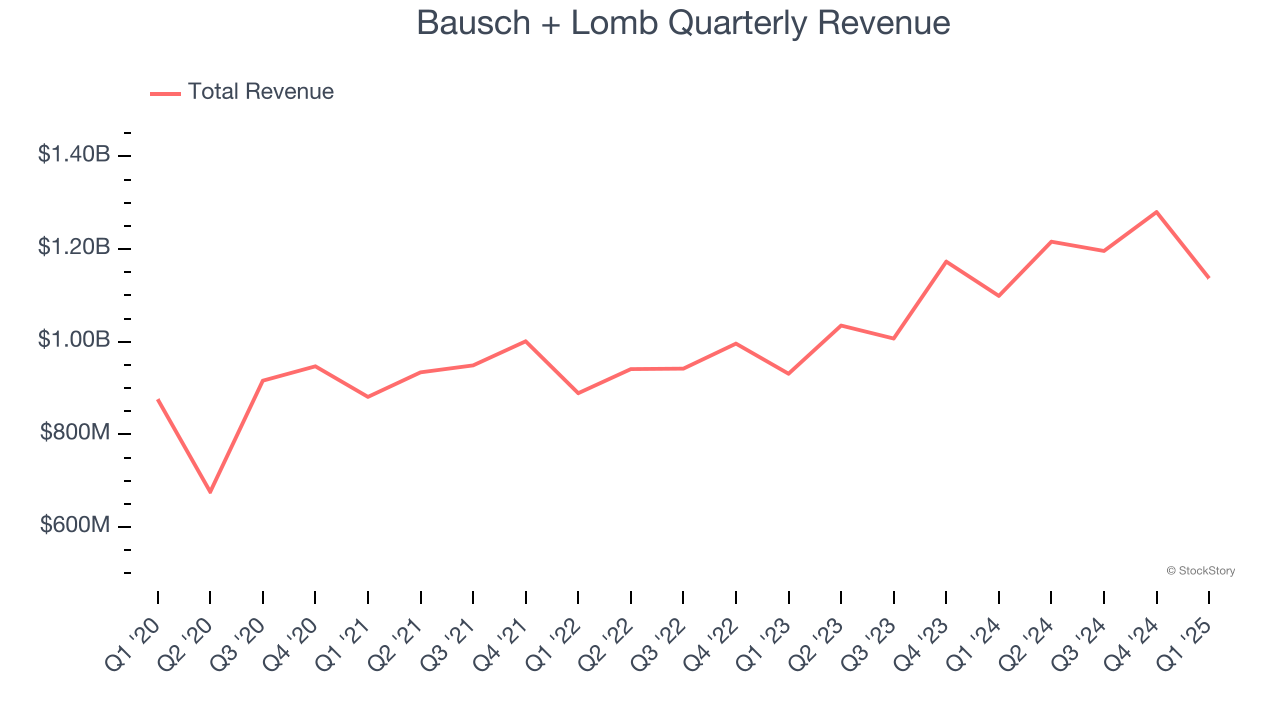
Long-term growth is the most important, but within healthcare, a half-decade historical view may miss new innovations or demand cycles. Bausch + Lomb’s annualized revenue growth of 12.6% over the last two years is above its five-year trend, suggesting its demand recently accelerated. 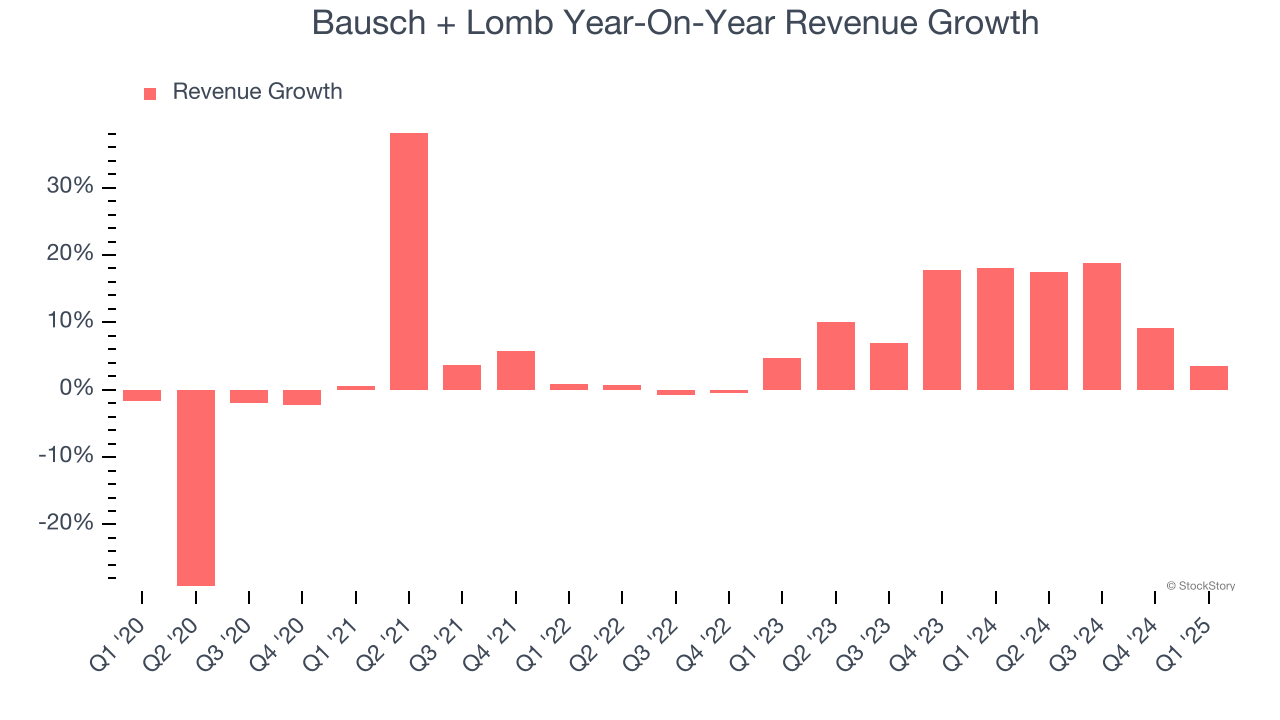
We can dig further into the company’s sales dynamics by analyzing its constant currency revenue, which excludes currency movements that are outside their control and not indicative of demand. Over the last two years, its constant currency sales averaged 14.2% year-on-year growth. Because this number is better than its normal revenue growth, we can see that foreign exchange rates have been a headwind for Bausch + Lomb. 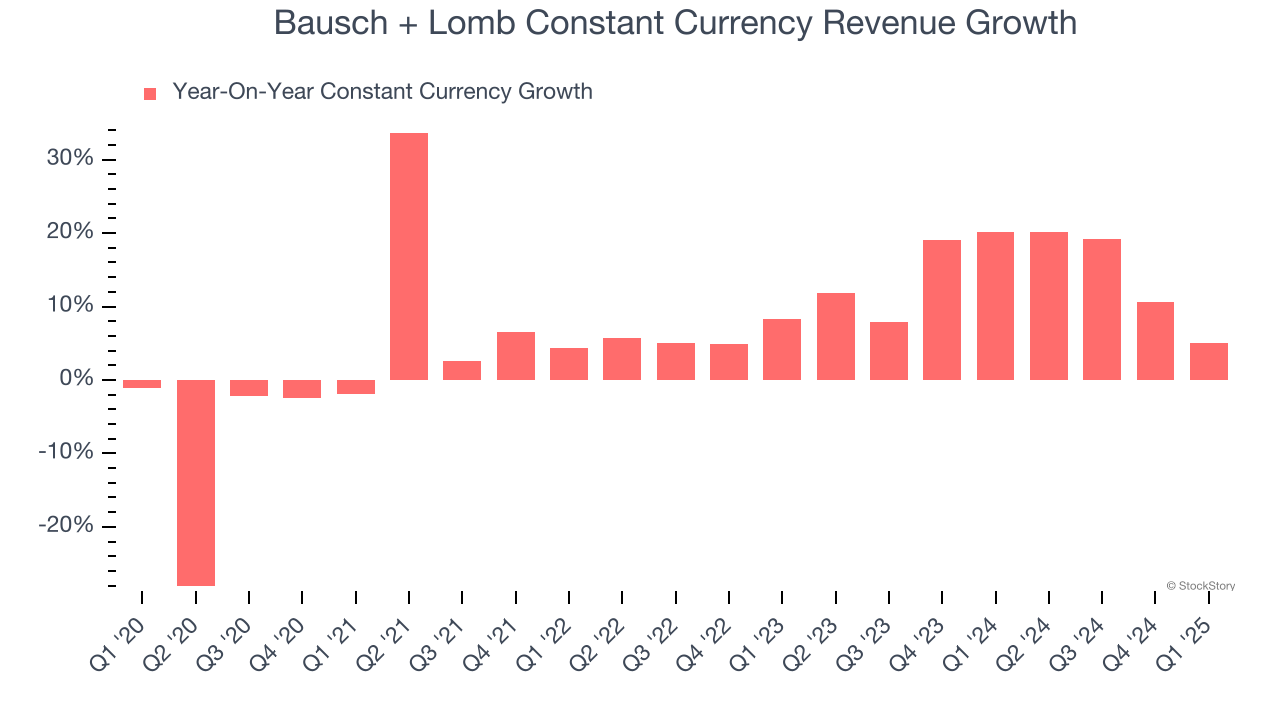
This quarter, Bausch + Lomb’s revenue grew by 3.5% year on year to $1.14 billion, falling short of Wall Street’s estimates.
Looking ahead, sell-side analysts expect revenue to grow 4.8% over the next 12 months, a deceleration versus the last two years. This projection is underwhelming and implies its products and services will face some demand challenges.
Here at StockStory, we certainly understand the potential of thematic investing. Diverse winners from Microsoft (MSFT) to Alphabet (GOOG), Coca-Cola (KO) to Monster Beverage (MNST) could all have been identified as promising growth stories with a megatrend driving the growth. So, in that spirit, we’ve identified a relatively under-the-radar profitable growth stock benefiting from the rise of AI, available to you FREE via this link.
Operating Margin
Operating margin is a key measure of profitability. Think of it as net income - the bottom line - excluding the impact of taxes and interest on debt, which are less connected to business fundamentals.
Bausch + Lomb was profitable over the last five years but held back by its large cost base. Its average operating margin of 4.7% was weak for a healthcare business.
Analyzing the trend in its profitability, Bausch + Lomb’s operating margin decreased by 7.2 percentage points over the last five years. The company’s two-year trajectory also shows it failed to get its profitability back to the peak as its margin fell by 2.5 percentage points. This performance was poor no matter how you look at it - it shows its expenses were rising and it couldn’t pass those costs onto its customers.
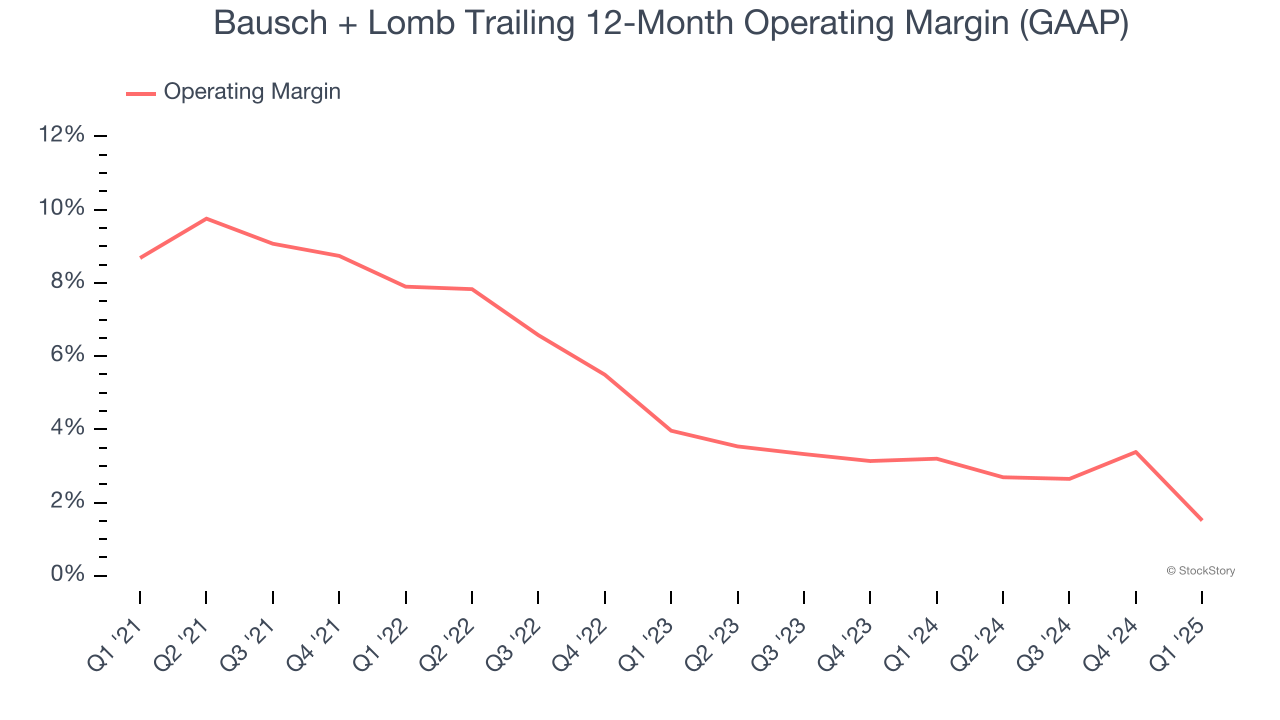
This quarter, Bausch + Lomb generated an operating profit margin of negative 7.3%, down 7.8 percentage points year on year. This contraction shows it was less efficient because its expenses grew faster than its revenue.
Earnings Per Share
Revenue trends explain a company’s historical growth, but the long-term change in earnings per share (EPS) points to the profitability of that growth – for example, a company could inflate its sales through excessive spending on advertising and promotions.
Sadly for Bausch + Lomb, its EPS declined by 28.6% annually over the last five years while its revenue grew by 5.3%. This tells us the company became less profitable on a per-share basis as it expanded.
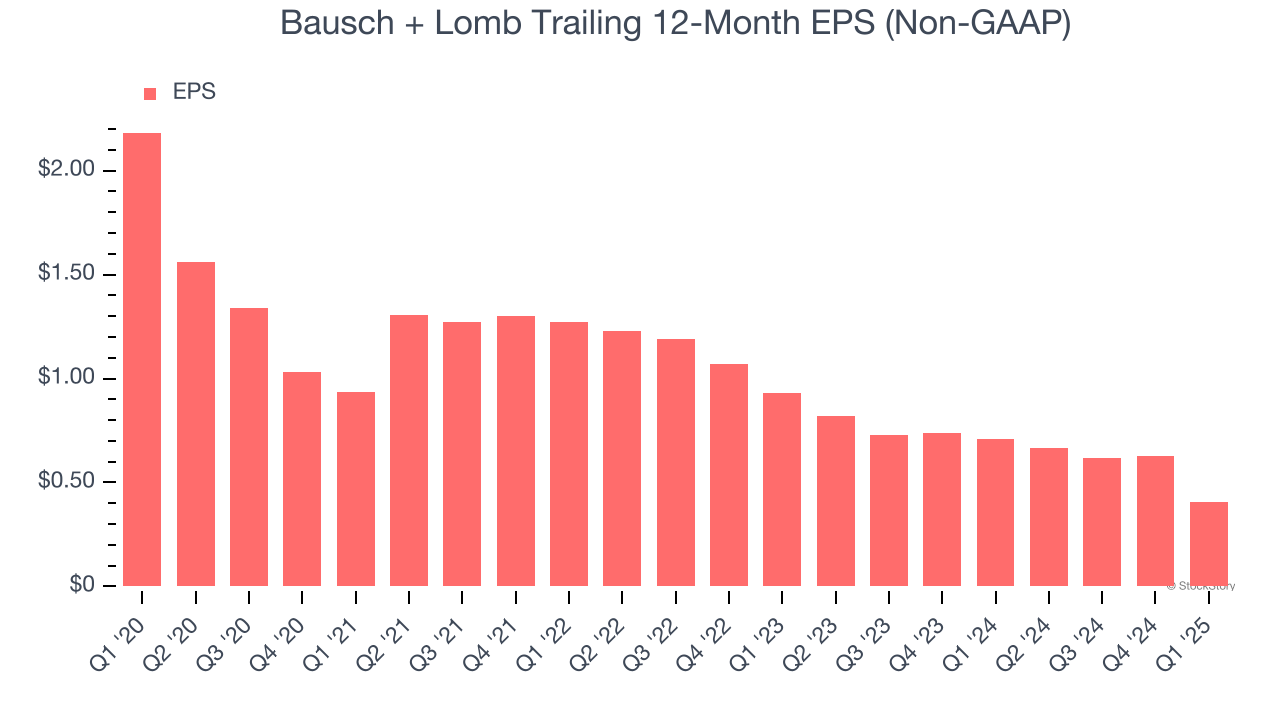
Diving into the nuances of Bausch + Lomb’s earnings can give us a better understanding of its performance. As we mentioned earlier, Bausch + Lomb’s operating margin declined by 7.2 percentage points over the last five years. This was the most relevant factor (aside from the revenue impact) behind its lower earnings; taxes and interest expenses can also affect EPS but don’t tell us as much about a company’s fundamentals.
In Q1, Bausch + Lomb reported EPS at negative $0.15, down from $0.07 in the same quarter last year. This print missed analysts’ estimates. Over the next 12 months, Wall Street expects Bausch + Lomb’s full-year EPS of $0.41 to grow 94.9%.
Key Takeaways from Bausch + Lomb’s Q1 Results
It was good to see Bausch + Lomb provide full-year revenue guidance that slightly beat analysts’ expectations, although raising full-year revenue guidance after missing on revenue often raises questions. As mentioned, the company's constant currency revenue fell short of Wall Street’s estimates, leading to an EPS miss. Overall, this quarter could have been better. The stock traded down 10.4% to $12.29 immediately after reporting.
The latest quarter from Bausch + Lomb’s wasn’t that good. One earnings report doesn’t define a company’s quality, though, so let’s explore whether the stock is a buy at the current price. If you’re making that decision, you should consider the bigger picture of valuation, business qualities, as well as the latest earnings. We cover that in our actionable full research report which you can read here, it’s free.



